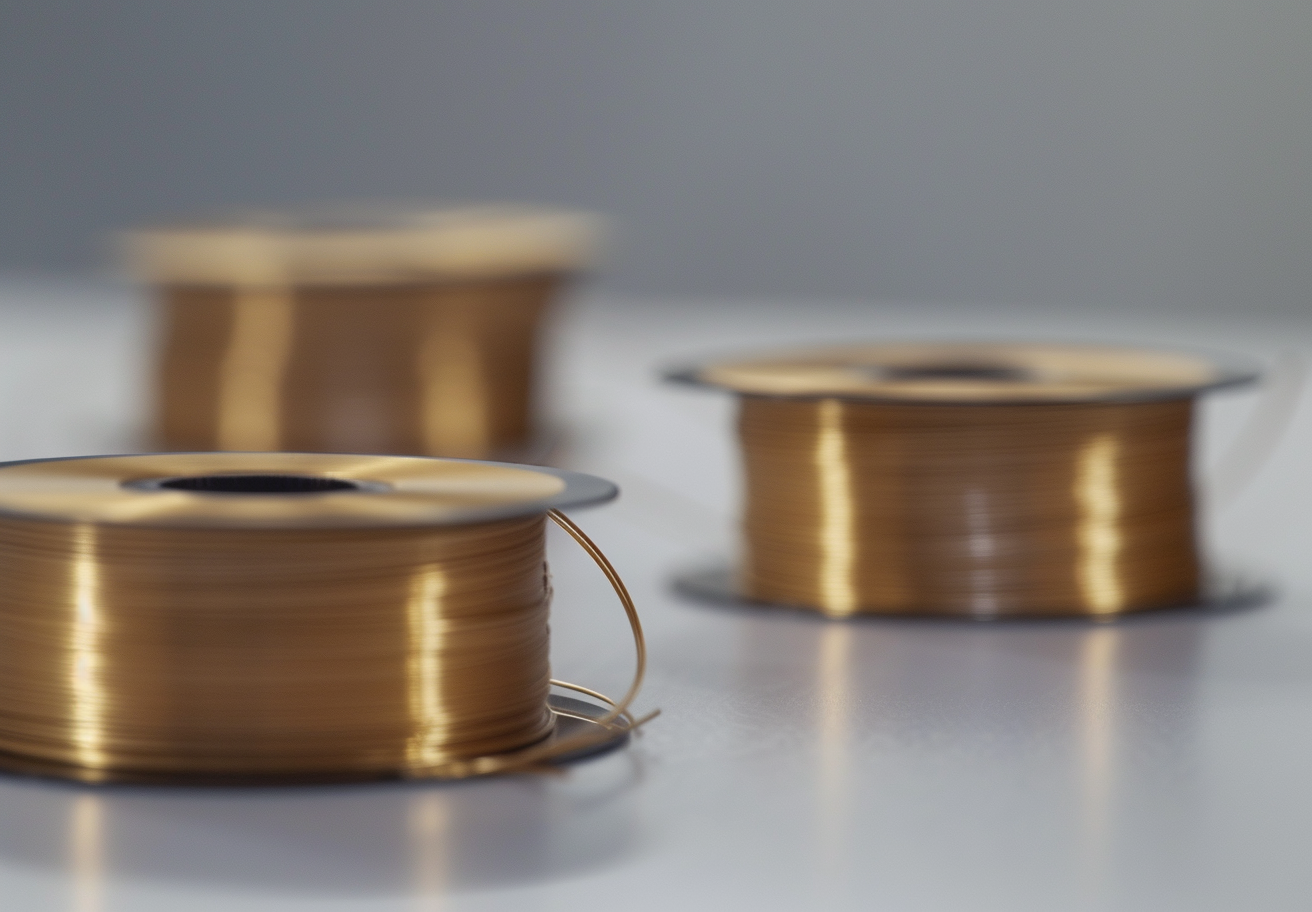Gold bonding wire plays a key role in semiconductor manufacturing. It connects the chips in electronic devices, ensuring smooth communication between components. In this guide, we’ll explore gold bonding wire, why it’s important, and where it’s used.
What Is Gold Bonding Wire?
Gold bonding wire is a thin strand made from pure gold. It has a high level of purity, often exceeding 99.99%. This wire is designed for use in semiconductor packaging. Manufacturers prefer gold because of its outstanding properties, like high electrical conductivity, thermal stability, and chemical resistance.
The gold bonding wire comes in various diameters, typically ranging from 13 to 50 micrometers. These sizes allow for precise control when connecting small components. Stanford Advanced Materials (SAM) offers precious metal wires in different diameters to meet specific needs.
Why Gold Bonding Wire Is Used in Electronics
Gold bonding wire has become essential in the electronics industry. Its unique features make it the best choice for creating reliable connections in semiconductor devices.

Key Properties of Gold Bonding Wire:
-
High Electrical Conductivity: Gold conducts electricity well, which is vital for fast data transfer between electronic components.
-
Thermal Stability: Gold can withstand high temperatures without losing its properties, making it ideal for high-performance devices.
-
Corrosion Resistance: Unlike other metals, gold does not tarnish or corrode, which ensures a longer lifespan for the connections.
-
Flexibility and Strength: Gold bonding wire is flexible but strong, which allows for easy handling without breaking.
These properties make gold bonding wire a go-to material for many applications in the electronics and semiconductor industries.
Applications of Gold Bonding Wire
Gold bonding wire serves many functions in various industries. Its use goes beyond just semiconductor packaging, extending into medical and aerospace technologies. Here are some key applications:
-
Smartphones and Wearable Electronics: Gold bonding wire connects the internal circuits in smartphones, tablets, and wearables. Its reliability ensures these devices function smoothly.
-
Medical Devices: In medical equipment, such as pacemakers and diagnostic tools, gold bonding wire provides stable performance and is safe to use inside the human body.
-
Commercial Aircraft and Satellites: Gold bonding wire is also used in aerospace technology. It withstands harsh conditions in aircraft and satellite systems.
-
NFC Technology: Near-field communication (NFC) devices use gold bonding wire to ensure fast and secure data transmission.
-
Power Generation Systems: High-performance power generators rely on gold bonding wire for durable and reliable connections.
These applications highlight the versatility of gold bonding wire in many fields.
Comparing Gold Bonding Wire to Other Materials
While gold bonding wire is widely used, there are alternatives like aluminum and copper wires. Here’s why gold often comes out on top:
-
Corrosion Resistance: Gold resists oxidation and corrosion better than copper and aluminum. This feature makes it more reliable in harsh environments.
-
Superior Bonding: Gold wire bonds well to other materials, ensuring secure connections in electronics.
-
Better Performance at High Temperatures: Gold maintains its properties under extreme temperatures, unlike aluminum, which can degrade.
However, gold is more expensive than copper or aluminum. For this reason, some manufacturers might choose alternatives in cost-sensitive applications.
How to Choose the Right Gold Bonding Wire
Selecting the right gold bonding wire depends on your specific needs. Factors like wire diameter, purity, and bonding method play a role. Here are a few tips to help you make the right choice:
-
Wire Diameter: Choose a thinner wire for microelectronics. For larger applications, a thicker wire might be more suitable.
-
Purity Level: Ensure the gold bonding wire has a high purity level to guarantee its performance.
-
Application Type: Consider the environment where the wire will be used. If the conditions are extreme, gold’s corrosion resistance and thermal stability will be beneficial.
If you’re still unsure, please contact our experts at Stanford Advanced Materials (SAM) for guidance.
Why Choose Stanford Advanced Materials for Gold Bonding Wire?
Stanford Advanced Materials (SAM) offers high-quality precious metal wire in various sizes. We ensure that our wires meet industry standards for performance and durability. SAM’s gold bonding wire is available in diameters from 13 µm to 50 µm, catering to different needs in semiconductor and electronic applications.
We provide a reliable supply and technical support to help you make the best choice. Our team is here to assist with any questions or specific requirements you might have.
Conclusion
Gold bonding wire is a crucial material in semiconductor and electronic device manufacturing. Its properties like high electrical conductivity, corrosion resistance, and durability make it an excellent choice for creating reliable connections. While gold bonding wire may have a higher cost, its performance and lifespan often justify the investment.
Whether you need it for smartphones, medical devices, or aerospace technology, gold bonding wire offers unmatched reliability. Stanford Advanced Materials (SAM) is here to provide you with top-quality products tailored to your needs. Contact us today to learn more about our offerings and find the perfect solution for your project.





